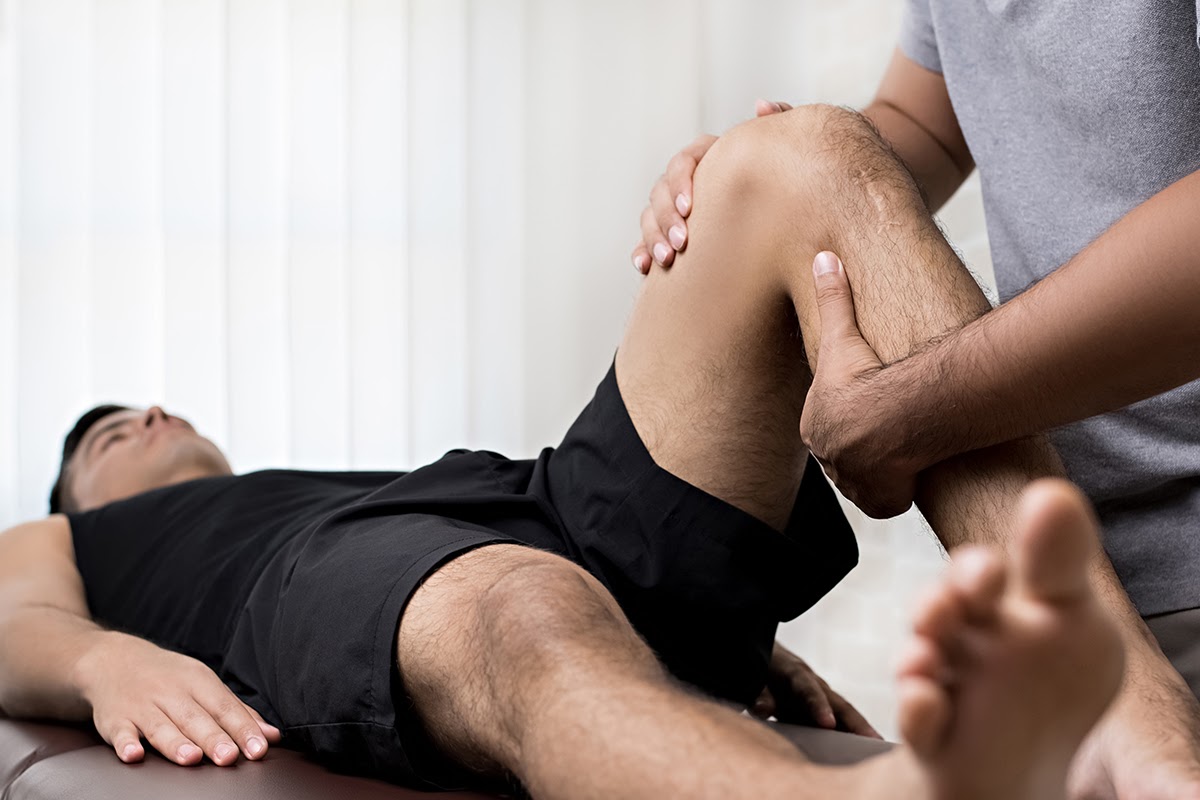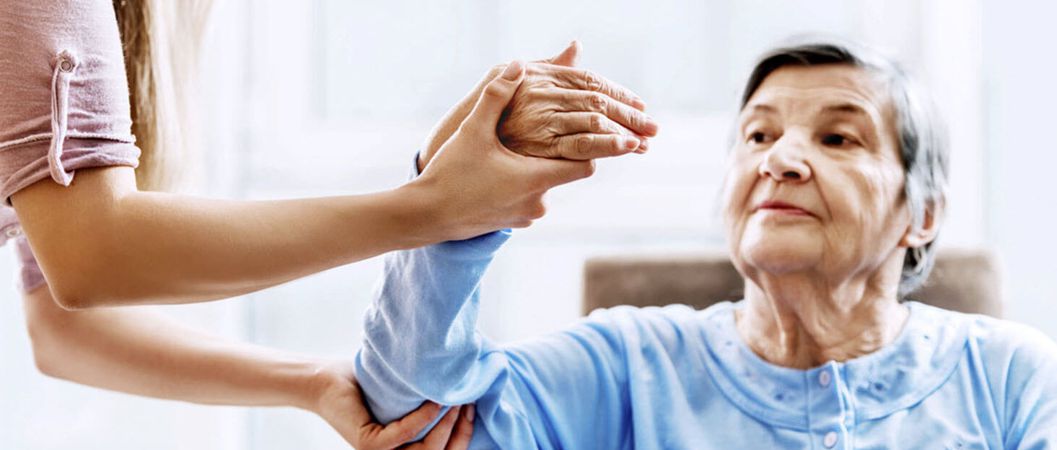Many people underestimate the emotional aspect of suffering a stroke. While the physical damage is more obvious, the loss of independence that comes with the condition often hurts just as much. Your lack of mobility leaves you relying on others for simple tasks that you used to do every day. Plus, you may start to feel isolated from your community as your stroke makes it difficult for you to get around. The good news is that there is life after a stroke. That’s exactly what Claire’s discovering right now.
THE MARATHON RUNNER WHO HAD A STROKE
Claire seemed like the last person that you’d expect to have a stroke. Based in Dublin, she’d always had a passion for health and fitness. In fact, she planned to run the London Marathon at age 50. She also worked as a project manager at a top printing and mail firm. Claire was as fit as a fiddle and was very close to achieving her marathon goal. She’d trained herself to run 22 miles when the worst happened.
Suffering the Stroke
On 12th March 2015, Claire suffered a debilitating stroke. She couldn’t possibly have seen it coming. In fact, she’d spent the weekend before it training for her marathon in London. To her, there were no indications that her life was about to change forever. It happened while she was home alone. Claire began to feel unwell and collapsed. She lay on the floor, unable to move, for 10 hours before her best friend found her. She’s extremely lucky to still be here. Doctors later discovered that Claire had a hole in her heart that had gone undetected for years. Her exertions in marathon training may have triggered her stroke. But there was no way that she could have known it would happen. She returned home deflated and unable to walk.
Regaining Independence
Claire would not allow her stroke to hold her back for long. She wanted to regain her independence, which meant that she needed to learn how to walk again. But she also recognised that walking isn’t the most practical solution given her mobility issues. That’s why she began raising money to buy an electric wheelchair. Claire says that the chair will allow her to get around more easily and feel like she’s part of the local community again. And she hasn’t given up her dream of walking again either. After two years of rehab, she’s able to stand up and walk slowly. She still uses her electric wheelchair to improve her mobility. But through hard work and dedication, she hopes not to need it at some point in the future. Her goal now is to be able to walk the London Marathon.
HOW CAN YOU REGAIN YOUR INDEPENDENCE?
Claire’s story is inspirational because it shows us that there is life after a stroke. You don’t have to allow you mobility issues to hold you back. If you create a plan and stay determined to see it through, you can regain your independence, just as Claire has. But you may need a little help.
These are five tips for regaining your independence after a stroke.
TIP #1 – GET AN ELECTRIC WHEELCHAIR
Depending on the severity of your stroke, you may find it difficult to operate a manual wheelchair. Thankfully, an electric wheelchair provides you with a great alternative. It will allow you to get out and about again without having to worry about fatigue or mobility issues.
That’s why Claire raised funds to get one herself. Despite her determination to walk again, she recognises that she still needs some help. Her electric wheelchair allows her to travel outside and remain a part of her local community. There’s no reason to put your social life on hold as you work on your recovery. And if you isolate yourself, it’s possible that you’ll fall into a depression. An electric wheelchair affords you the mobility needed to do a lot of the things that you did pre-stroke.
TIP #2 – CHANGE HOW YOU WASH AND DRESS YOURSELF
Feeling unable to dress and take care of yourself is one of the first major independence barriers that you’ll experience. You may find that lack of mobility in an affected limb prevents you from following the same routine that you did before. It can feel extremely frustrating to not be able to slip clothes on easily anymore. But there are things that you can do to work around your mobility issues.
For example, you could switch to using electric razors for shaving instead of traditional ones. Electric razors require less physical dexterity to do their jobs and still produce good results. You may also be able to change the way that you dress yourself. Plan around your affected limbs. Take advantage of the strength that you have in your unaffected limbs to place the affected limbs into clothes first.
You may also choose to change the types of clothing you wear. For example, you could switch to wearing slip-on shoes or shoes with Velcro fasteners. This means that you don’t have to struggle with laces. There’s also specialist equipment available, such as hooks, that can help you to pull your trousers up. You may not be able to dress yourself as readily as you did in the past. But changing your routine and being patient with yourself will allow you to handle the task alone.

TIP #3 – MAKE CHANGES TO THE BATHROOM
There are also changes that you can make to your bathroom to help with cleaning yourself. Right now, you may feel like taking a shower is an impossibility. Your mobility issues may make it difficult to stand long enough to clean yourself properly. Try installing grab bars in the shower so that you can support yourself more readily.
If your mobility issues still cause problems, you may want to remodel the shower to allow you to sit down as you wash. There are also freestanding shower chairs available for those with large enough tubs. It’s also possible to install transferring chairs that fit right on top of your bathtub. These chairs typically attach to the wall and fold back flat when you’re finished with them.
Investing in long-handled sponges will also make cleaning yourself easier. They allow you to use your unaffected limbs to reach areas that you previously relied on your affected limbs to reach.
Finally, you may consider having the entire bathroom redesigned. In this case, choose a contractor who understands your mobility needs and specialises in universal design. However, this option requires substantial investment.
TIP #4 – USE DINING AIDS FOR MEAL TIMES
Relying on somebody else to feed you can make you feel like a child. Unfortunately, loss of dexterity may make it difficult for you to use a knife and fork to manipulate your food.
A universal cuff may help here. This device fits over your hand and has slots for inserting utensils. It will hold a knife or fork steady as you use it without requiring you to grip the utensil directly. Furthermore, this device allows you to keep using the affected limb, which is an essential part of your rehabilitation. Spills from slippy plates may also be an issue. To remedy this, consider buying plates that have suction caps on the bottom. These hold the plate in place to ensure it doesn’t move as you eat. Some even stand at an angle, which makes it easier for you to access your food.

TIP #5 – DON’T BE AFRAID TO ASK FOR HELP
Rehabilitation is a frustrating time for any stroke survivor. It feels like you’re having to adapt to a new body and relearn so many important functions all over again.
The important thing to remember is that you don’t have to take the journey towards independence alone. Your doctors and therapists will work closely with you to develop a rehabilitation plan. Make sure that you follow the exercises that they set and talk to them if you’re experiencing issues. They may be able to provide advice on something that’s affecting your sense of independence. Talk to your friends and family too. Confront the issue of your limited mobility and ask for their support as you work to rebuild your physical capabilities.
Finally, take part in support groups for stroke survivors. Part of regaining independence involves overcoming the emotional issues that a stroke creates. Fellow survivors understand this first-hand and can help you to overcome the tough times. Plus, they can provide advice on what they’ve done to make improvements.
DON’T LET A STROKE HOLD YOU BACK
Recovering from a stroke is a frustrating experience. You may feel like you can’t do anything for yourself due to limited mobility and dexterity issues. But with a little help, you can regain your independence.
Hopefully, the above tips will help with this. And Access Rehabilitation Equipment would like to play a part in your recovery. We offer a range of equipment, including electric wheelchairs and daily living aids, that can help you.
Plus, we work closely with survivors to help them find the right equipment for their situation.
Contact us today for a 15-minute consultation where we’ll discuss what you need to regain your independence.
Resources:
https://differentstrokes.co.uk/stories/claires-story/
https://www.everydayhealth.com/news/recovering-from-stroke-9-people-who-will-help-you-heal/
https://www.saebo.com/taking-back-independence-stroke/
http://www.stroke-network.com/articles/five-easy-ways-for-stroke-survivors-to-regain-independence
http://www.adaptiveaccess.com/folding_tub_seat.php

